Dos o tres cosas que sé sobre el concepto de cultura
DOI:
https://doi.org/10.22380/2539472X.1286Palabras clave:
.Resumen
El tema central de esta conferencia trata sobre la permanencia del significado de cultura como concepto antropológico y del de su permanencia entre los pueblos que estudian los antropólogos. Cuestiona el rechazo que el funcionalismo superficial hace de la afirmación de la diferencia cultural de los pueblos –la llamada invención de la tradición– y la vigencia de tales distinciones –la inventiva de la tradición–. Sostiene, además, que precursores como Boas, Linton, etcétera, lejos de ser responsables de las críticas contemporáneas sobre su trabajo, aportaron ideas acerca de la cultura que aún son pertinentes para la comprensión de las formas y procesos culturales actuales. La diferencia es que, en aquel entonces, ellos tuvieron una ventaja sobre la mayoría de nosotros: no tuvieron el temor paralizante de la discusión posestructuralista.
Descargas
Referencias bibliográficas
Abrams, M. H. 1997. “The transformation of English Studies:1930- 1975”. Daedalus. 126: 105-131.
Aginsky, B. W. 1940. “An indian´s soliloquy”. Am. J. Sociol. 46: 43-44. DOI: https://doi.org/10.1086/218525
Appadurai, A.1996. Modernity at large:cultural dimensions of globalization. University of Minnesota Press. Minneapolis.
Aston, W. G. (trans.) 1972. Nihongi :chronicles of Japan from the earliest times to A.D.697. Charles E. Tuttle. Tokyo.
Babadzan, A. 1985. “Tradition et histoire: quelques problemes de méthode”. Cah. Orstom, Ser. Sci. hum. 21: 115-123.
– 1988. Kastom and nation-building in the South Pacific. En Ethnicities and nations. R. Guidieri, F. Pellizi & S. J.Tambiah (eds). TX:The Rothko Chapel. Austin.
Barth, F. 1969a. “Introduction”. En Ethnic groups and boundaries. F. Barth (ed.). Universitets Forlaget. Bergen-Oslo.
Bateson, G.1935. “Culture contact and schismogenesis”. Man (N.S.): 178-183. DOI: https://doi.org/10.2307/2789408
Benedict, R. 1932. “Configurations of culture in North America”. Am.Anthrop. 3: 1-27. DOI: https://doi.org/10.1525/aa.1932.34.1.02a00020
– 1934. Patterns of culture. Houghton-Miflin. Boston.
Bhabha, H.1994. The location of culture. Routledge. Londres.
Bickford,L.1994. Sumo and the woodblock print masters. Kodansha International. Tokyo.
Boas, F. 1920. “The method of Ethnology”. Am. Anthrop. 22: 311-321. DOI: https://doi.org/10.1525/aa.1920.22.4.02a00020
– 1938. “Methods of research”. En General Anthropology. F. Boas (ed.). D. C. Heath. Boston.
– 1966 (1911). Introduction to handbook of American Indian languages (published with J.W. Powell, Indian linguistic families of America north of Mexico). P. Holder (ed.). Univ. of Nebraska Press. Lincoln.
Bolitho, H. 1988. “Sumo and popular culture: the Tokugawa period”. En The Japanese trajectory: modernization and beyond. G. McCormack & Y.Sugimoto (eds). Cambridge University Press. Cambridge. DOI: https://doi.org/10.1017/CBO9780511759666.002
Brightman, R. 1955. “Forget culture: replacement, transcendence, relexification”. Cult. Anthrop.10: 509-546.
Brown, M. 1996. “On resisting resistance”. Am. Antrhop. 98: 729-735. DOI: https://doi.org/10.1525/aa.1996.98.4.02a00030
Brumann, C. (en prensa).”Writing for culture:why a successful concept should not be Discarded”. Curr. Anthrop. 40. Supplement. DOI: https://doi.org/10.1086/200058
Burke, K. 1966. Language as symbolic action. University of California Press. Berkeley.
Carneiro, M. (da Cunha). 1995. “Children, politics and culture: the case of Brazilian Indians”. En Children and the politics of culture. S. Stephens (ed.). Univ. Press. Princeton.
Carrier, J. G. (ed.). 1992. History and tradition in Melanesian anthropology. University of California Press. Berkeley.
Cassirer, E. 1933. 2Le langage et la construction du monde des objects”. J. Psicol. normale Pathol. 30: 18-44.
– 1955-7. The philosophy of symbolic forms. 3 vols. Yale University Press. New Haven.
Chapman, M. (ed.) 1985. “Mobility and identity in the Island Pacific”. Pacific Viewpoint 26. Special issue.
Clifford, J. 1988. The predicament of culture. Harvard University Press. Cambridge, MA.
Cuyler, P. L. 1979. Sumo: from rite to sport. Weatherhill. Nueva York.
Dirlik, A. 1994.”The postcolonial aura: Third World criticism in the age of global Capitalism”. Crit. Inq. 20: 328-356. DOI: https://doi.org/10.1086/448714
– 1996. “The past as legacy and project: postcolonial criticism in the perspective indigenous historicism”. Am. Ind. Cult. Res. J. 20 (2): 1-31. DOI: https://doi.org/10.17953/aicr.20.2.l1275444802m8545
Drummond, L. 1981. “The serpent´s children: semiotics of cultural genesis in Arawak and Trobriand myth”. Am. Ethnol.8: 633-660. DOI: https://doi.org/10.1525/ae.1981.8.3.02a00130
During, S. 1993. “Introduction”. En The cultural studies reader. S. During (ed). Routledge. Londres. DOI: https://doi.org/10.4324/9780203190784
Durkheim, E. 1947. Elementary forms of the religious life. Free Press. Glencoe, Ill.
Elias, N.1978. The civilizing process: history of manners. Urizen Books. Nueva York.
Eriksen, T.H. 1993. Ethnicity and nationalism. London:Pluto Press.
Errington, F & D. Gewertz. 1986. “The confluence of powers: entropy and importation among the Chambri”. Oceania. 57: 99-113. DOI: https://doi.org/10.1002/j.1834-4461.1986.tb02200.x
– 1996. “The individuation of tradition in a Papua New Guinea modernity”. Am. Anthrop. 98: 114-126. DOI: https://doi.org/10.1525/aa.1996.98.1.02a00100
Escobar, A. 1995. Encountering development: the making and unmaking of the Third World. Princeton University Press. Princeton.
Firth, R. 1951. “Contemporary British social anthropology”. Am. Anthrop. 53: 474-489. DOI: https://doi.org/10.1525/aa.1951.53.4.02a00030
Friedman, J. 1994. Cultural identity and global process. Sage. Londres.
– 1996. “The politics of de-authentification in escaping from identity, a response to ´Beyond identity´ by Mark Rogers”. Identities. 31 (1-2):127-136.
– 1997. “Global crisis, the struggle for cultural identity and intellectual porkbarrelling: cosmopolitans versus locals, ethnics and nationals in an era of de-hegemonisation”. En Debating cultural hybridity. P. Werbner & T. Modood (eds). Zed Books. Londres.
– (en prensa). “Indigenous struggles and the discrete charm of the bourgeoisie”. Austral.J.Anthrop.
Fukuyama, F. 1989. “The end of history?”. The National Interest. Summer: 3-18.
Gewertz, D. B. 1983. Sepik River Societies: a historical ethnography of the Chambri and their neighbors. Yale University Press. New Haven.
Goldenweisser, A. 1937. Anthropology: an introduction to primitive culture. F. Crofts. Nueva York.
Handler, R & J. Linnekin. 1984. “Tradition, genuine or spurious”. J.Am.Folk. 97: 273- 290.
Hannerz, U. 1992. Cultural complexity: studies in the social organization of meaning. Columbia University Press. Nueva York.
Hanson, A. 1989. “The making of the Maori: cultural invention and its logic”. Am.Anthrop. 91: 890-902. DOI: https://doi.org/10.1525/aa.1989.91.4.02a00050
Harrison, S. 1990. Stealing people´s names: history and politics in a Sepik River cosmology. University Press. Cambridge. DOI: https://doi.org/10.1017/CBO9780511521096
Hartman, G. H. 1997. The fateful question of culture. Columbia University Press. Nueva York.
Hensel, C. 1996. Telling ourselves: ethnicity and discourse in southwestern Alaska. Oxford University Press. Nueva York.
Herskovits, M. 1938. Acculturation: the study of culture contact. Peter Smith. Gloucester, MA.
– 1945. “The processes of cultural change”. En The science of man in the world crisis. R. Linton (ed.). Columbia University Press. Nueva York.
Hobsbawm, E & T. Ranger (eds). 1983. The invention of tradition. University Press. Cambridge.
Howe, K. 1977. “The fate of the ´savage´ in Pacific historiography”. N. Z. J.Hist. 11: 137- 154.
Jolly, M. 1992a. “Spectres of inauthenticity”. Contemp. Pacific. 4: 49-72.
– 1992b. “Custom and the way of the land: past and present in Vanuatu and Fiji”. Oceania. 62: 330-354. DOI: https://doi.org/10.1002/j.1834-4461.1992.tb00361.x
– & N. Thomas (eds). 1992. “The politics of tradition in Oceania”. Oceania. 62 (4). Special issue. DOI: https://doi.org/10.1002/j.1834-4461.1992.tb00360.x
Keesing, R. 1982. “Kastom in Melanesia: an overview”. Mankind. 13: 297-301. DOI: https://doi.org/10.1111/j.1835-9310.1982.tb00994.x
– 1989. “Creating the past: custom and identity in the contemporary Pacific”. Contemp. Pacific. 1: 19-42.
– 1996. “Class, culture, custom”. En Melanesian modernities. J. Friedman & J. G. Carrier (eds) (Lung Monogr. Social Anthrop. 3). Lund University Press. Lund.
Keesing, R. & R. Tonkinson (eds). 1982. “Reinventing traditional culture: the politics of kastom in island Melanesia”. Mankind. 13 (4). Special issue.
King, A. D. (ed). 1997. Culture, globalization and the world-system: contemporary conditions for the representation of identity. University of Minnesota Press. Minneapolis.
Kroeber, A. L. 1917. “The superorganic”. Am. Anthrop. 19: 163-213. DOI: https://doi.org/10.1525/aa.1917.19.2.02a00010
– 1948. Anthropology. Harcourt, Brace. Nueva York.
Kuper, A. 1994. “Culture, identity and the project of a cosmopolitan anthropology”. Man (N.S.) 29: 537-554.
Langer, S. 1976 (1942). Philosophy in a new key: a study of the symbolism of reason, rite and art; third edition (first edition 1942). Harvard University Press. Cambridge, MA.
Lawrence, P. 1984. The Garia: an ethnography of a traditional cosmic system in Papua New Guinea. University Press. Manchester.
Leach, E. R. 1954. Political systems of highland Burma. Harvard University Press. Cambridge MA.
Lemmonier, P. 1997. “´Mipela wan bilas´: identité et variabilité socioculturelle chez les Anga de Papouise-Nouvelle-Guineé”. En Le Pacific sud aujourd´hui :identities et transformations culturelles. S. Tcherkézoff & F. Douaire-Marsaudon (eds). CNRS Editions. París.
Linnekin, J. & L. Poyer (eds). 1990. Cultural identity and ethnicity in the Pacific. University of Hawaii Press. Honolulu.
Linton, R. 1936. The study of man. D. Appleton-Century. Nueva York.
– 1937. “One hundred per cent American”. Am. Mercury. 40 (April): 427-429.
– 1943. “Nativistic movements”. Am. Anthrop. 45: 230-240. DOI: https://doi.org/10.1525/aa.1943.45.2.02a00070
Locke, A. & B. J. Stern (eds). 1946. When peoples meet: a study in race and culture contacts; edición revisada. Hinds, Hayden & Eldredge. Nueva York.
Mccaskell, D. 1977. “From tribal peoples to ethnic minorities”. En Development or domestication? Indigenous peoples of Southeast Asia. D. McCaskill & K. Kampe (eds). Silkworm Books. Cheng Mai, Tailandia.
Malinowski, B. 1992 (1996). “Myth in primitive psychology”. En Magic, science and religion. Waveland. Prospect Heights, IL.
Meillet, A. 1905-6. “Comment les mots changent de sens”. L´Année sociol. 9: 1-38.
Miller, D. (ed.). 1995. Worlds apart: modernity through the prism of the local. Routledge. Londres.
Murdock, G. P. 1951. “British Social Anthropology”. Am. Anthrop. 53: 465-473. DOI: https://doi.org/10.1525/aa.1951.53.4.02a00020
Myers, F. R. 1994. “Culture-making: performing aboriginality in the Asia Society Gallery”. Am. Ethnol. 21: 679-699. DOI: https://doi.org/10.1525/ae.1994.21.4.02a00020
Neumann, K. 1992. “Tradition and identity in Papua New Guinea: some observations regarding Tami and Tolai”. Oceania: 295-316. DOI: https://doi.org/10.1002/j.1834-4461.1992.tb00359.x
Norton, R. 1993. “Culture and identity in the South Pacific: a comparative analysis”. Man (N.S.). 28: 741-759. DOI: https://doi.org/10.2307/2803995
ORTNER, S. 1995. “Resistance and the problem of ethnographic refusal”. Comp. Stud. Soc .Hist. 37: 175-193. DOI: https://doi.org/10.1017/S0010417500019587
Peltier, P. 1998. “´Alas ¡ And on we go´”. En Pacific answers to Western hegemony. J. Wassman (ed.). Berg. Oxford.
Philippi, D. (trans.). 1968. Kojiki. University of Tokio Press. Tokyo. DOI: https://doi.org/10.1515/9781400878000
Pred, A. & M. J. Watts. 1993. Reworking modernity: capitalism and symbolic discontent. Rutgers University Press. New Brunswick, NJ.
Rabinow, P. (ed.). 1984. The Foucault reader. Pantheon Books. Nueva York.
Radcliffe-Brown, A. R. 1940. “On social structure”. J. Royal Anthrop. Inst. 70:1-12. DOI: https://doi.org/10.2307/2844197
Radin, P. 1965 (1933). The method and theory of ethnology: an essay in criticism. Basic Books. Nueva York.
Rosaldo, R. 1989. “Imperialist Nostalgia”. Representations. 26: 107-122. DOI: https://doi.org/10.2307/2928525
Rutz, H. 1987. “Capitalizing on culture: moral ironies in Fiji”. Comp. Stud. Soc. Hist. 29: 533-557. DOI: https://doi.org/10.1017/S0010417500014717
Sahlins, M. 1991. “The return of the event, again”. En Clio in Oceanía. A. Biersack (ed.). Smithsonian Institution Press. Washington, D. C.
– 1993a. “Cery very fuckabede”. Am. Ethnol. 20: 848-867. DOI: https://doi.org/10.1525/ae.1993.20.4.02a00100
– 1993b. Waiting for Foucault. Prickly Pear Press. Cambridge.
– 1995. How ´natives´ think: about Captain Cook, for example. University of Chicago Press. Chicago.
– 1999. Culture in practice. Zone Books. Nueva York.
Sapir, E. 1938. “Why cultural anthropology needs the psychiatrist”. Psychiatry. 1: 7- 12. DOI: https://doi.org/10.1080/00332747.1938.11022170
Sartre, J. P. 1968. Search for a method. Vintage Books. Nueva York.
Simmel, G. 1971. “On individuality and social forms”. Donald Levine (ed.). University of Chicago Press. Chicago.
Spicer, E. H. 1994. “The nations of a state”. En American Indian persistence and Resurgence. K. Kroeber (ed.). Duke University Press. Durham NC.
Stocking, G. W. JR. 1968. Race, culture and evolution. Free Press. Nueva York.
Strathern, M. 1995a. “Introduction”. En Shifting contexts M. Strathern (ed.). Routledge. Londres.
– 1995b. “The nice thing about culture is that everyone has it”. En Shifting contexts. M. Strathern (ed.). Routledge. Londres.
Tcherkézoff, S & F. Douaire-Marsaudon (eds). 1997. Le PacifiqueSud aujourd´hui: identités et transformations culturelles. CNRS Ethnologie. París.
Thomas, N. 1990. “Partial texts: representation, colonialism and agency in Pacific History”. J. Pacif. Hist. 25: 139-158.
– 1991. Entangled objects: exchange, material culture and colonialism in the Pacific. Harvard University Press. Cambridge MA.
– 1992. “The inversion of tradition”. Am. Ethnol. 19: 213-232. DOI: https://doi.org/10.1525/ae.1992.19.2.02a00020
– 1993. “Beggars can be choosers”. Am. Ethnol. 20: 868-876. DOI: https://doi.org/10.1525/ae.1993.20.4.02a00110
Thompson, L.A. 1998. “The invention of the Yokozuna and the championship system, or, Futahaguro´s revenge”. En Mirror of modernity: invented traditions of modern Japan. S. Vlastos (ed.). University of California Press. Berkeley.
Turner, J. W. 1997. “Continuity and constraint: reconstructing the concept of tra dition from a Pacific perspective”. Contemp. Pacif. 9: 345-381.
Turner, T. 1991. “Representing, resisting, rethinking: historical transformations of Kayapo culture and anthropological consciousness”. En Colonial situations G. Stocking (ed.). University of Wisconsin Press. Madison.
Tylor, E. B. 1903. Primitive culture. 2 vols. (cuarta edition). John Murray. Londres.
Van Meijl, T. 1996. “Historicising Maoritanga: colonial ethnography and the reification of Maori traditions”. J. Polynes. Soc. 105: 311-346.
Vlastos, S. (ed.). 1998. Mirror of modernity: invented traditions of modern Japan. University of California Press. Berkeley.
Warren, K. B. 1992. “Transforming memories and histories: the meanings of ethnic resurgence for Mayan Indians”. En Americas: new interpretive essays. A. Stephan (ed.). Oxford University Press. Nueva York.
Wassman, J. (ed.). 1998. Pacific answers to Western hegemony: cultural practices of identity construction. Berg. Oxford.
Weiner, A. B. 1995. “Culture and our discontents”. Am. Anthrop. 97: 14-21. DOI: https://doi.org/10.1525/aa.1995.97.1.02a00040
White, L. A. 1949. The science of culture. Farrar, Straus & Cudahy. Nueva York.
Wright, S. 1998. “The politicization of ´culture´”. Anthrop. Today 14 (1): 7-15.




















